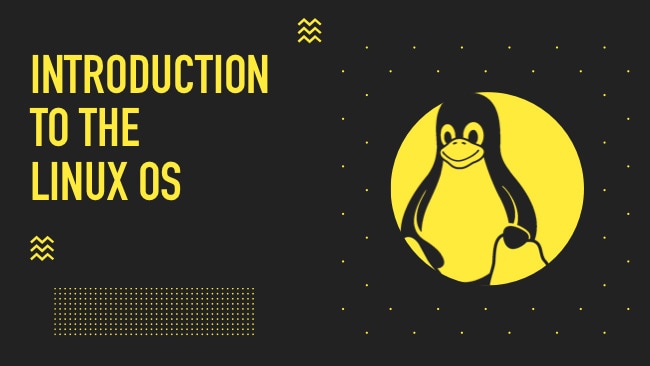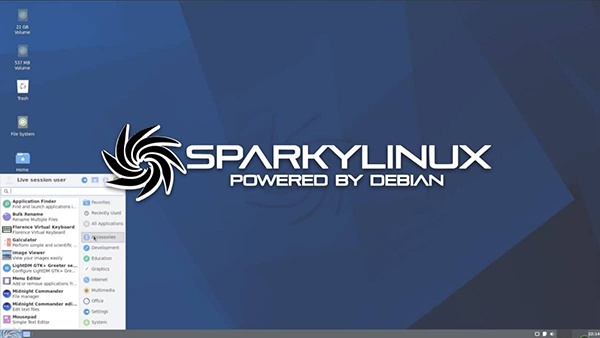11 of the most popular Linux distributions
Suppose you are looking for a professional operating system. In that case, you should know that Linux is the most popular and compatible open-source operating system for developers. It has several superior features in terms of security, flexibility, and scalability compared to other operating systems.
In this article, we will review the best Linux distribution and explain the differences between different versions of Linux. We will also answer your questions, such as which version of Ubuntu is better or whether Fedora is better than Ubuntu.
To determine which version of Linux is better, it is necessary to learn more about the different versions of Linux and then choose the best operating system from among the Linux distributions.
An Overview of the History of Linux Versions
Linux is not a complete operating system package. The real concept of Linux is that Linux is just an operating system kernel. This kernel was produced in 1991 by Linus Torvalds.
Before Linus Torvalds created the Linux kernel, many programmers had developed applications managed by the kernel but failed to produce a coherent kernel. Kernel will end up in a coherent operating system until Linus Torvalds created a kernel named Linux.
Due to its open-source nature, the Linux operating system has created different versions of Linux, such as Debian or Ubuntu. Each of these Linux distributions is developed by different companies. In this article, we will compare Linux distributions and discuss which Linux is better. We will also mention the differences between different versions of Linux.
What is a Linux distribution?
You may be wondering what Linux distributions are and how to use them.
A Linux distribution is an operating system made of software based on the Linux kernel, and Linux users can obtain Linux distributions from various sources.
What is the difference between different types of Linux distributions?
There are different Linux distributions in the world. Many of them have their philosophies, and some, such as Fedora, do not allow coded software (other than Open Source – read more about open source in the What is open source article) to be installed at the system level. In contrast, some Other Linux distributions like Mint have support for coded software to make things easier for users. Many use Packet Manager, configuration programs, and other software to make the configuration quick.
Some distributions have not been supported for a long time. Distributions like Ubuntu LTS or RedHat are designed as stable distributions that have been supported for several years with security updates and bug fixes. Some Linux distributions are intended for desktop computers, others for servers without a graphical interface, and others for specific uses such as home PCs. The comparison of Linux distributions does not end here, and regarding the difference between Linux versions, you should see what kind of use you are looking for in Linux distributions.
Introduction of various Linux distributions
Linux was an operating system in which different people or companies compiled a set of apps along with the kernel and used them as a package. This process continued until the three big companies started producing very coherent packages and providing great support.
- RedHat
- Debian
- Slackware

After these three major companies produced their packages, all the produced Linux distributions became a subset of the three main distributions.
Now, if you intend to install Linux as your operating system, select and install one of the available Linux operating systems based on your needs. You can also use Linux From Scratch to compile and generate a new Linux distribution.
In the following, we will introduce you to the top 10 Linux distributions, plus three attractive ones, and tell you what the best Linux distribution is.
1- ArchLinux is one of the best Linux operating systems
Suitable for: Programmers and developers
In the list of Linux distributions, ArchLinux is one of the light and flexible distributions you will encounter in a user environment.
Following an open-source model, this distribution offers the latest stable versions of most software. Its features include user-centeredness, versatility, and simplicity.
2- Debian – one of the best popular Linux distributions for beginners
Suitable for: beginners
Like all Linux distributions, Debian is very popular; some people even consider it the best. Various Linux distributions, such as Ubuntu, PureOS, SteamOS, etc., choose Debian as a base for their software.
Debian is an operating system comprising free, open-source software. It is among the Linux distributions approved by the Free Software Foundation. The Debian project has produced software since 1993 and continues to provide new versions.
But Debian, in general, is known for moving slowly and steadily. Its update speed is lower than that of operating systems such as Ubuntu and Mint. This makes Debian Stable, which is excellent for some plans.
Ubuntu was created based on Debian to create a more stable platform with faster updates and optimizations. Software packaging happens together in a user-friendly environment, which offers faster updates.
Features of Debian Linux distribution as the best Linux distribution:
- Strong hardware support
- It runs software well.
- Security support of different versions by Linux developers
- There is a lot of free and open-source software for this version of Linux.
3- Fedora – one of the most powerful Linux distributions
Suitable for: software developers, educators
Like many Linux distributions, Fedora creates an ideal platform for hardware and cloud space and allows developers to build solutions tailored to their users. Fedora has a user-friendly interface that is efficient to work with.
In fact, Fedora is a project focusing on free software. You cannot find a simple solution to install graphics drivers on it. Although unofficial repositories are available and provide this possibility, it is still not as simple as other Linux distributions.
Fedora is a bleeding-edge operating system that includes the latest software version. Because of this, the postmortem mentioned that the latest updates are tested in the real environment. If the test is successful, they will be installed on Red Hat Enterprise Linux.
Unlike Ubuntu, Fedora has not developed its user interface. Instead, the Fedora project uses upstream software. This user interface has provided a platform that integrates all the upstream items without adding special tools. By default, Fedora uses the GNOME 3 user interface.
Red Hat supports Fedora and is a foundation of the Red Hat Enterprise Linux project. As we said before, Fedora is a bleeding-edge operating system, and no version will be supported for long. The Red Hat company suggests using Enterprise editions, namely Red Hat Enterprise Linux.

4- Linux Mint distribution
Suitable for: professionals, developers, educators
Linux Mint is one of the most popular desktop Linux distributions, and it is both free and open source. Mint is a Linux distribution based on Ubuntu, which uses the same Ubuntu repositories and is considered one of the best Linux versions for home users.
Based on Debian and Ubuntu, Linux Mint offers about 30,000 packages and is one of the best operating systems. Therefore, similar software packages are available for both. In general, Mint is a side distribution that focuses heavily on media codecs that Ubuntu does not include by default in its distributions. It is one of the lightest Linux distributions.
[irp posts=” 17004″ name=” Effective solution to deal with DDOS attacks in Linux”]
This Linux distribution already has its own identity. You can’t find the Unity UI in Ubuntu. Instead, you can use Cinnamon or MATE user interfaces. Mint has a slower update routine and does not support the automatic installation of essential updates, which has caused some Ubuntu developers to call this distribution insecure.

5- Manjaro Linux distribution for beginners
Suitable for: beginners
The Manjaro Linux distribution provides all the benefits of advanced software for quick startup and automated tools to minimize manual configuration among all Linux operating systems. This version is one of the best Linux versions for home users.
6- openSUSE Linux distribution from beginner to advanced
Suitable for: beginners and advanced users
openSUSE, formerly known as SUSE Linux, is one of the simplest Linux distributions. This distribution aims to create open source and usable tools for software developers and system administrators.
7- SparkyLinux professional distribution
Suitable for: professional users
SparkyLinux is one of the special Linux distributions created with the support of Debian.
Like all Linux distributions, this one is fast and light and can easily process data.
In all types of Linux distributions, this distribution has a desktop environment that even ordinary users can use.

8- Tails Linux security distribution
Good for: Security and privacy
Easily bypass censorship and spying with the Tails Linux distribution. This distribution uses the Tor network to protect your privacy online. In addition, Tails includes a set of programs for working on sensitive documents and communicating securely.
9- Ubuntu is the most well-known Linux distribution
Suitable for: developers, professionals, educators
What is Ubuntu? It is among the most popular and best Linux distributions with open-source features. All the necessary programs, such as the Office suite, browsers, email and media programs, etc., are also included in this distribution.
Ubuntu is probably the most well-known Linux distribution in the world. This operating system is based on Debian, but it has its own software repositories and does not use Debian repositories. Much of the software in it is synced with Debian Repository software. What is noteworthy about it is that it has the most complete repository among all Linux distributions.
The Ubuntu project has focused on producing solid desktop and server versions so that its users have an acceptable user experience of this operating system. As a result, it has no fear of producing new and completely customized technologies to increase the sense of better user experience.
Ubuntu used to use the GNOME 2 user interface, but now it uses Unity. It is the only company that uses its own graphical server, Mir, while the rest of the Linux distributions use Wayland.
The operating system has always been updated. He has promised to release a new version once every 6 months. Every 2 years, it offers a version with long-term support. As of this writing, the 16 LTS version is also available.
10- Introduction of Zorin distribution
Suitable for: beginners, professionals
Zorin Linux is a powerful distribution designed to make computer use faster, safer, and easier.
The other three distributions include Nix, Kanotix, and BackBox, each with its features.
11- CentOS / Red Hat Enterprise Linux
Red Hat Enterprise Linux is a large operating system project designed for desktop and server purposes. Its server version is used to provide Linux web hosting services. We should mention that today, in the country, this service is provided by two types of hosts: foreign and Iranian Linux hosts.
Red Hat Enterprise Linux is based on the Fedora project, but its platform is designed to be completely stable and with long-term support. Its main difference from Fedora is that it has placed Fedora as its test version. Apart from testing, it troubleshoots software in its labs in Fedora and the real environment.
At one time, Red Hat Enterprise Linux was offered for free, but the CentOS project started to work when the company decided to add a paid license. Since Red Hat followed the GPL software license, they had to offer Red Hat Enterprise Linux as open source.
Therefore, CentOS prepares a copy and makes it available to everyone without a paid license! In fact, CentOS is a free version of Red Hat Enterprise Linux. Currently, these two companies have started to cooperate, and CentOS has become part of Red Hat.
What is the best Linux distribution?
Keep in mind that there is no such thing as the best Linux distribution. Each Linux distribution is created for a specific purpose, and you should choose CentOS, Debian, Ubuntu, or many other versions of Linux based on your needs.
In general, each Linux distribution has been created with a specific purpose and a specific target market. If you intend to install one of the Linux distros, you can look at the distributions mentioned above.

